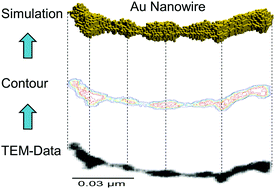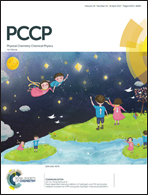Thermally induced breakup of metallic nanowires: experiment and theory
Abstract
We present time-resolved transmission electron microscopy studies of the degradation of Au, Ag, Cu and Ni nanowires deposited on a heated support. The wires are grown under fully inert conditions in superfluid helium droplets and deposited onto amorphous carbon. The inherent stability of these pristine metal nanowires with diameters below 10 nm is investigated in the absence of any stabilizers, templates or solvents. The phenomenon of Rayleigh-breakup, a consequence of diffusion processes along the wire surfaces, is analysed in situ via scans over time and support temperature. Our experimental efforts are combined with simulations based on a novel model featuring a cellular automaton to emulate surface diffusion. Based on this model, correlations between the material parameters and actual breakup behaviour are studied.



 Please wait while we load your content...
Please wait while we load your content...